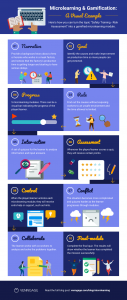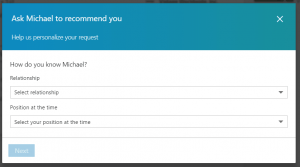When it comes to marketing, trends change as often as days pass, and marketers should be able to adapt to them if they want their businesses to shine.
And when it comes to social media marketing, things are no different. I’m not saying that I’ll revolutionize social media marketing in this post. But it will, for sure, confirm your thoughts on what’s next with the trends and strategies you’ve been using in 2017.
Today I’m focusing on Instagram marketing strategies and tactics, and the features you need to implement them.
According to Omnicore, ever since its launch in 2010, Instagram has managed to create a community around its idea that today has more than 600 million active users and is the second social network that users check daily, after Facebook.
Those statistics show that total active users per day on Instagram reach 300 million, with a number of likes per day at 4.2 billion. In the first 24 hours after Instagram released the video feature, about 5 million videos had already been shared.
So what does it take to succeed?
Let’s start with one of the most important “actors” in this scene: your audience.
Know your audience
One of the most important tasks in a marketer’s job is to know their company’s audience.
How do you know to whom you are selling your product? Or your idea?
The tip I’m giving you for this is to interact with your existing audience – whether that’s 5, 500, or 5000+ people. As often and as personally as you can.
Ask them to write comments or send you private messages on specific topics that you want to promote. A good example is Mercedes, which drives interaction by asking a simple question and prompting followers to answer it:
This will make them part of your story and you will know better what they’re interested in.
Another good example on interacting with your audience is by interviewing them on your blog. Here’s a great example on how Flipsnack is doing it:

The second tip I want to share with you in order to know your audience better is to check who follows you: look at their profiles, see what they’re posting, and what they like. This way you have more chances to personally engage: comment on their photos and videos and let them know you are interested in what they are posting.
These are the two methods that worked best for me in terms of researching my audience, both for the startup I work and for my blog.
Find your purpose
Why are you using this platform in the first place? This should be your first question when you create an Instagram marketing strategy for your business.
Do you want to show people the atmosphere in your office? Show off your company culture in images or videos?
Do you want to sell a product?
Or to disseminate your beliefs?
Or maybe generate traffic for your website?
Whatever the reason is, you need to find it, then create a strategy to achieve the goal you have in mind.
Now that you have established which is your audience and your purpose, let’s see what Instagram marketing strategies you should start with.
The features that Instagram is offering right now allow you, the marketer, to show your creativity when it comes to creating a visual strategy for your brand – because this is Instagram: it’s all about sharing experiences through photos and videos that can better describe your company culture, your products, and the people behind the curtains.
Be creative. Show how awesome your product is. Here is an example from McDonald’s Singapore:
They used colourful doodles to bring their products to life.
Whether we’re talking about an IT product, a fashion one, or a service, creativity should be your starting point when creating a content strategy.
Let’s see how we can use Instagram’s features in a marketing strategy:
Use Instagram’s Features – Try These
1. Photo ads
Let’s start with the first feature Instagram was created for: posting pictures and adding filters to show a certain at a moment in time. This is why the app is called INSTAgram, right? In time, people started to share memories or blasts from the past, plus marketing messages, so capturing instant moments or situations isn’t the main purpose of the app anymore.
One of the features that the app offers to the advertisers is Instagram Ads, which are linked to the Facebook ads. So, besides posting photos of your products, you can also create ads for them, in which you can also tag products and link them to your website to increase sales.
In order to create an Instagram Ad, you need to switch your profile to a business one.
Then follow the simple steps described here and then check the results and moderate the campaign.
2. Instagram Stories ads
After launching the Instagram Stories earlier this year, the app also allows advertisers to create Instagram Stories Ads, 15-second ad with videos or photos that run between the stories your followers watch every day.
According to Facebook, this type of ad is the first format that is allowing full-screen 9:16 on the Instagram platform.
Companies that have already used those ads already see an increase in their revenue.
For now, Instagram Stories ads are a great way to grow your brand awareness, but Instagram said that in the future there will be other objectives like website clicks, web conversions, mobile app installs, and other options.
Here are a few things you need to know before you launch your first Instagram Ad Stories:
Instagram Ad Stories Images features:
- You can upload up to 6 images – but they won’t appear like a carousel ad
- Size: 1080 x 1920 pixels (Ratio aspect: 9:16)
- They are skippable ads
- To maximize ad delivery, you can use images that contain little or no overlay text
Instagram Ad Stories Videos features:
- Upload format: .MOV, .MP4 or .GIF File (file size: 2.3 GB max)
- Length: max. 15 seconds
- No standalone text such as titles, description, messages, and other captions
- Resolution: 720 pixel quality
So this is a good start to understand how these ads can be managed.
3. Multiple photos and videos
Another feature that I personally like and see the value in is the multiple photos and videos one. You can upload up to 10 photos and videos in one post. If you’re interested in how to do this, I recommend you to check out this article.
Some that you can use this feature in are:
- Showcase your team: if your company is divided into departments, you can schedule posts in which you show each member of your team. This will personalise your business and people will be more attached to it. Here’s an example from TailWind:
- Show the behind-the-scenes of your product. This way, people trust more what they buy and convert more easily. For example, if you have an app, show your audience how it works. Instead of users having to look for a YouTube video made by one of the app’s users, you can come in with one of your experts can show your audience how to use new features. This is what Instagram also does when launching a new feature.
- Present your artwork. Whether you’re a designer, painter, or photographer, show your audience your latest work. See the example of Dan Crețu, a Romanian artist that showcases his artwork on Instagram.
4. Get in touch with influencers
Another way to showcase your brand on Instagram is by getting in touch with influencers and working with them to help you promote your product and define a creative campaign to match both their style and yours.
But be very careful when it comes to influencers: they should match your audience’s profile, if you want to be credible when it comes to what you are selling.
A trend that many marketers are talking about lately is micro-influencers: these are people that don’t have as many followers as the Kardashians, but they’re following you and can bring value to your business.
This new trend is encouraging brands to associate with ”normal” people that really trust you and maybe even used your product on their own already.
If you need any reasons why to use influencers, I give you this article, in which both micro-influencer and influencer marketing has been used by different companies around the world.
5. Taggable products
Following other networks’ trends, last year Instagram released a new feature that allows publishers to tag products in the photos they post and to redirect the user to the website they can acquire the specific product they are interested in.
This way, Instagram is making a step forward to encourage brands to use the app for showcasing products and let the users discover what they like in a more easy and fun way.
If you’re using influencer marketing, you can ask the influencers you work with to tag your products in their photos and if one of their followers like a specific product, they can easily reach your website.
Conclusion
These are a few examples on how to use the latest Instagram features in your marketing strategy.
We all know that each business has its own unique audience and both the purpose and the strategy should be adapted to it. Therefore I recommend that you go through your business profile and the purpose of your strategy for Instagram marketing first. Know your goal – then start experimenting the platform and make the best out of it.Digital & Social Articles on Business 2 Community
(86)
Report Post
 #tailwindfamily
#tailwindfamily






